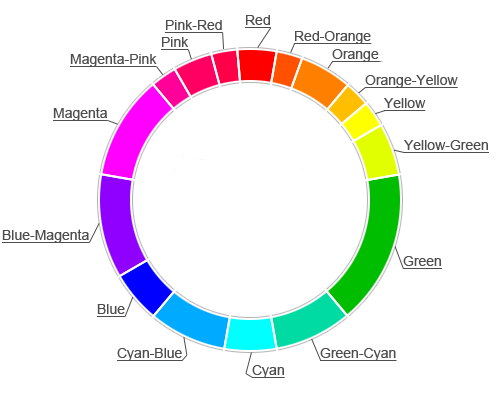Module parses color and determines its shade by hue value.
By default it uses data from WorkWithColor.com, but you can set custom rules for shades.
npm install check-color
var color = require('check-color');
// lime == #00ff00
color.getShade('lime'); // 'green'
color.isGreen('lime'); // true
color.isPink('lime'); // false
// coral == #ff7f50 (base shades are true for intermediate colors)
color.getShade('coral'); // 'red-orange'
color.isRedOrange('coral'); // true
color.isRed('coral'); // true
color.isOrange('coral'); // true
color.isBlue('coral'); // falseYou can pass as argument everything that parse-color can parse (e.g red, #ffff00, rgb(255, 0, 0))
Methods of module depend on config. Default config is in src/defaults.js, default methods are:
isRed, isRedOrange, isOrange, isOrangeYellow, isYellow, isYellowGreen, isGreen, isGreenCyan, isCyan, isCyanBlue, isBlue, isBlueMagenta, isMagenta, isMagentaPink, isPink, isPinkRed
Also there is getShade method, that returns shade name for color based on config.
You can set custom config with init method.
var color = require('check-color');
color.init({
// key - shade name
// value - array of hue ranges, first value of range - min hue, second - max hue
a: [
{h: [0, 100]},
{h: [201, 300]}
],
b: [{h: [101, 200]}],
c: [{h: [301, 360]}]
});
// Here you can use methods 'isA', 'isB', 'isC'
console.log(color.isA('red'));
